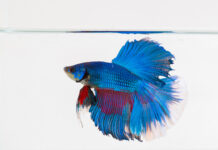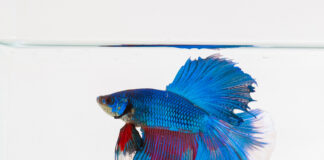Fishing for carp has regained popularity in recent years. These freshwater fish are large and native to Asia and Europe. Several types of carp are more prominent than others. These include black carp, grass carp, crucian carp, silver carp, and more.
There are certain things that you are going to have to keep in mind while fishing for carp. Carp prefer certain areas over others and are relatively shy fish. Depending on the season, they go to different places, but the main features are the same.
Do you know how to catch carp? No? Well, here’s a guide walking you through just what you need and what to do.
Moreâ¦
What You Need
Fishing Pole
A graphite fishing pole is not your best bet while fishing for carp. Carbon fiber, e glass, or composite are better and do not have the same risk of shattering that a graphite one will.
Common carp grow to be up to 60 pounds and will need a decent rod to be caught.

Fishing Line
The fishing line that you want to use should be robust enough to handle the weight of the fish being caught. This is essential when it comes to carp since they can be massive.
Buy a monofilament line that has a tensile strength that is high enough for the weight of the fish that you are fishing for. These lines also allow you to tie a knot that can be useful.

Hook
A hook that is barbed is better to keep the fish on the line. They are not always legal, so make sure that you know the law before using one in your area.
Larger hooks will be detected by the fish and are not as useful since they will not bite them.

Hook Remover
Being able to remove the hook is important, and it is not always able to be done without a tool to do so.
Bait
Sweetcorn is a type of bait that you can use that carp love. This applies to corn outside the can. It contains sugars and amino acids that allow it to be the ideal food for carp. The bright color also helps to attract attention.
Boilies can be used as an alternative to corn. These baits are made out of eggs, milk proteins, and eggs. Other baits include hemp, tiger nuts, chickpeas, carp pellets, and maize.

Net
A net to gather your catch once it has tired itself out can be super useful.
Rod Pod
Using a rod pod is ideal for carp fishing. This is because carp will be suspicious if your line is moving too much, and they will ignore it. The rod pod will keep your rod in place, so it will not be disturbed.

Clothes
Wearing proper clothing for the weather and for what you are going to be doing is important. Wear clothes that are comfortable and that you do not mind getting dirty. Boots are also a good thing if you happen to spend much time out there. They can help to prevent trench foot.
What To Do
Prepare Your Fishing Rod For Float Fishing
Getting your rig ready to be used to catch carp is essential to successful fishing.
As you feed the fishing line through the rings of the rod, leave some slack.
This will depend on how deep the water you are fishing in is. Just make sure that the end of the line will reach the bottom of the water, where carp like to feed.
To the top of the line, above the float, add a stop knot or float stop. This helps to regulate the float at the end of your line. Plenty of space between the knot and your float should be left in order to set the bait at the bottom where it should be. The location of the knot depends on the type of fish and how deep it is swimming, but generally when above the swivel, two or three arm lengths will suffice.

String your fishing line through the hole in the middle of the float. Use the slack of your line for this. Floats are not necessary but are super useful to show where carp are nibbling.
Next, add a weight underneath the float. This helps the bait to reach the bottom of the body of water. The placement of this weight should be five to nine inches away from the hook.
Tie your swivel to the line, allowing the hook to move in an 180 degree radius, preventing breaking and twisting of the line. Carp are known to escape, so this is particularly useful.
Lastly, cut take some line and cut a long piece to attach the hook to. Make the extra piece of line is long enough to reach the bottom of the water.
Find Your Fishing Spot
As stated before, carp like a lot of plant life and vegetation. During the hot seasons, they prefer shallower water while deeper water is better for them during the winter.
Be sure to find somewhere that you can make yourself comfortable. Patience is a must when fishing for carp.
Cast Your Reel
Locate a school of carp that are feeding, and cast your line directly ahead of where they are in the current. They will likely swim that way to feed.

Wait For A Bite
Watch your float for any signs of eating. If it begins to bob up and down, it is likely that there is a fish nibbling at your bait. It will also submerge quickly if a fish is hooked.
Reel It In
For when the fish are eating your bait and not biting, use the lift method. The float on your line will lift out of the water, and you should wait for this to happen to continue. Jerk back your rod in an upward motion and begin to reel in. It is possible to reel in nothing, but patience, again, is necessary.
One it is hooked, not like in the situation above, hold on tight and pull it upward smoothly. Go slow and let the fish tire out before pulling it out of the water, using either a net. Then take the hook out, covering its eyes if it is thrashing around on you.
Fishing for carp is a fun activity for anyone who likes to fish. It may take patience and a little time, but it can be very rewarding. The only thing that you need to make sure of is that you are using the proper technique and bait in the right area.
When you are finally fishing up carp, ensure that you are preserving them correctly and that you have fun. Let me know what you think in the comments and share if you enjoyed this guide! Happy carp fishing!
>>> Read More:
Related Posts:







